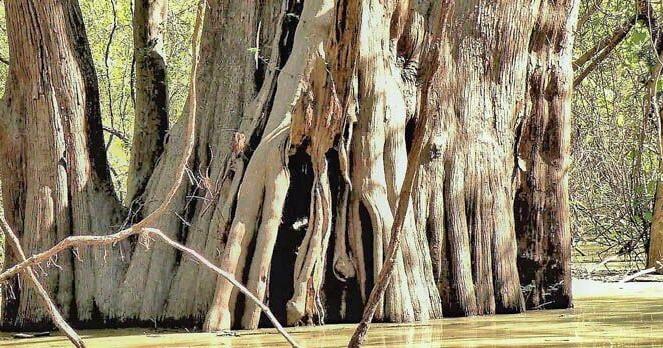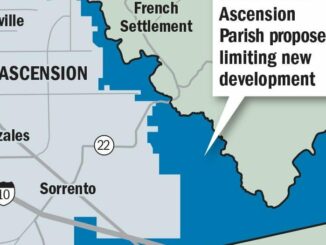
Cat Island National Wildlife Refuge, the forested wetland wilderness that is home to the largest tree east of the Mississippi River, has been given $1.47 million by the federal Migratory Bird Conservation Fund to add 548 acres to the reserve.
The refuge, located along the river just north of Baton Rouge, now includes 10,943 acres in West Feliciana Parish near the town of St. Francisville. When Congress created it in 2000, the refuge was authorized to eventually acquire up to 36,500 acres in the area.
Jimmy Laurent, the U.S. Fish & Wildlife Service refuge manager for Cat Island, said his office is negotiating with two landowners to complete the purchases, and until then, the exact location of the expansion areas is not available. He said both parcels were along the river.
It took twelve people holding hands to span around the trunk of this bald cypress tree on Cat Island near St. Francisville Wednesday, July 25, 2001, that is the largest tree east of the Mississippi River and fifth largest in the continental United States. (Archive photo by Chuck Cook)
Cat Island is best known for being the location of the largest tree east of the Mississippi River, a bald cypress – scientific name Taxodium distichum – that the American Forests Champion Trees program lists as the fifth largest tree in the nation.
That ranking is based on a score combining the tree’s circumference, 626 feet; height, 91 feet, and spread of its crown or canopy, 87 feet. The four larger trees are in West Coast locations, including two California sequoias that are more than 1,200 feet and 950 feet tall.
The Migratory Bird Conservation Commission, which oversees the fund, in April approved spending $21.7 million for land acquisitions for five refuges, including at Cat Island. The other land purchases are:
- Clarks River National Wildlife Refuge, Kentucky, $6.6 million, 2,482 acres
- Green River National Wildlife Refuge, Kentucky, $11.4 million, 1,335 acres
- Silvio O. Conte National Fish and Wildlife Refuge, New Hampshire, $1 million, 797 acres
- Willapa National Wildlife Refuge, Washington state, $1.26 million, 239 acres
Money for the fund comes primarily from the sale of Federal Migratory Bird Hunting and Conservation Stamps, commonly known as Duck Stamps, and import duties on imported arms and ammunition. Since 1934, the Federal Duck Stamp Program has raised more than $1.1 billion for habitat conservation in the National Wildlife Refuge System.

Map of Cat Island National Wildlife Refuge property, marked in green. (U.S. Department of Interior)
Large areas of the Cat Island refuge are often flooded by Mississippi River water, usually between December and June. The refuge just reopened part of its Blue Goose Trail after water levels dropped this year. The water levels are projected to continue to fall through the end of May and through June, and the ability to visit and participate in fishing seasons will resume beyond that trail as conditions become favorable.
Public use regulations are available online, or by calling the refuge office at 985.882.2000.
Staff writer Mark Schleifstein can be reached at mschleifstein@theadvocate.com or on Twitter, @mschleifstein.



Leave a Reply